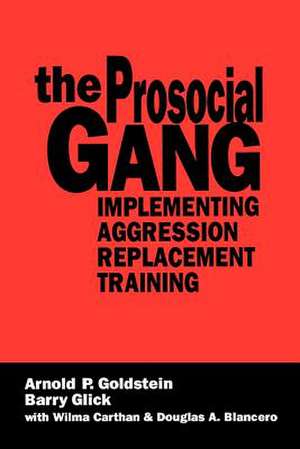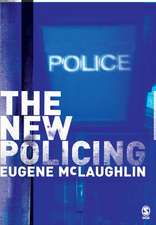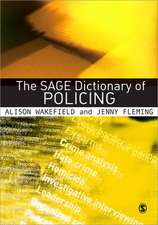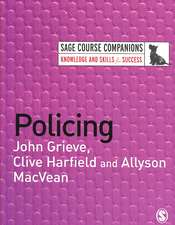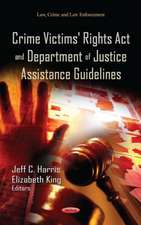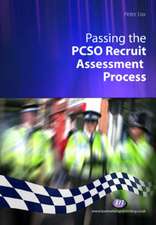The Prosocial Gang: Implementing Aggression Replacement Training
Autor Arnold Goldstein, Barry Glick, Wilma Carthan, Douglas Blanceroen Limba Engleză Paperback – 3 aug 1994
In addition, the book provides a thorough introduction to the history of gangs, current gang demographics, gang aggression and its etiology, as well as a review and critique of the various interventions that have been tried.
Preț: 605.50 lei
Preț vechi: 712.35 lei
-15% Nou
Puncte Express: 908
Preț estimativ în valută:
115.88€ • 125.82$ • 97.34£
115.88€ • 125.82$ • 97.34£
Carte tipărită la comandă
Livrare economică 22 aprilie-06 mai
Preluare comenzi: 021 569.72.76
Specificații
ISBN-13: 9780803957718
ISBN-10: 0803957718
Pagini: 129
Dimensiuni: 153 x 229 x 10 mm
Greutate: 0.23 kg
Ediția:1
Editura: SAGE Publications
Colecția Sage Publications, Inc
Locul publicării:Thousand Oaks, United States
ISBN-10: 0803957718
Pagini: 129
Dimensiuni: 153 x 229 x 10 mm
Greutate: 0.23 kg
Ediția:1
Editura: SAGE Publications
Colecția Sage Publications, Inc
Locul publicării:Thousand Oaks, United States
Cuprins
PART ONE: INTRODUCTION
Gangs in the United States
Gang Aggression
PART TWO: GANG INTERVENTION
An Historical Review
Aggression Replacement Training
Background and Procedures
Aggression Replacement Training
Evaluations of Effectiveness
PART THREE: THE A.R.T PROSOCIAL GANG PROGRAM
Gangs in the Hood
The Program
Management and Evaluation
PART FOUR: FUTURE PERSPECTIVES
Future Perspectives
Enhancing Generalization of Gain
Gangs in the United States
Gang Aggression
PART TWO: GANG INTERVENTION
An Historical Review
Aggression Replacement Training
Background and Procedures
Aggression Replacement Training
Evaluations of Effectiveness
PART THREE: THE A.R.T PROSOCIAL GANG PROGRAM
Gangs in the Hood
The Program
Management and Evaluation
PART FOUR: FUTURE PERSPECTIVES
Future Perspectives
Enhancing Generalization of Gain
Descriere
An effective gang intervention programme, Aggression Replacement Training (ART), is the subject of this book. Rearrest rates and other outcome results support the success of a project using the ART intervention approach with a series of very aggressive juvenile gangs in New York.
Working with gangs as a unit, the goal was not only to teach them anger control and other skills, but to do so in such a way that their real-world reference group (the gang) was turned, as much as possible, into a prosocial rather than an antisocial support group.
In addition, the book provides a thorough introduction to the history of gangs, current gang demographics, gang aggression and its etiology, as well as a review an
In addition, the book provides a thorough introduction to the history of gangs, current gang demographics, gang aggression and its etiology, as well as a review an
